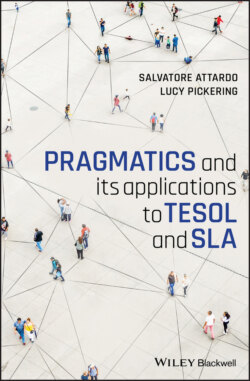Читать книгу Pragmatics and its Applications to TESOL and SLA - Salvatore Attardo - Страница 30
2.7 Can Pragmatics Be Assessed in the Classroom?
ОглавлениеThe answer here is yes. Brown (2001) details a variety of ways in which different pragmatic features can be assessed from multiple-choice tests to role-play tasks. Brown (2008) finds that role-plays assessed by external judges were the most reliable and gave the best discrimination. Tada (2005) and Roever (2005) report good results with multiple-choice tests. Ishihara (2010), however, reminds us that teachers should keep in mind that “pragmatic norms among competent L2 speakers encompass a healthy degree of variation, which is why they are simply norms and not rigid rules” (p. 311). So, it is necessary to exert caution when grading so that one’s preferred answer does not become the only ‘correct’ answer. For example, in response to
(9) Would you like to pet my dog?
1 a. Hell, no!
2 b. Yes, please.c.
3 No, thank you.
clearly (9.a) is pragmatically inappropriate (impolite), but both (9.b) and (9.c) are acceptable.
Practically speaking, what are the best strategies for teachers, especially novice ones? Building a validated standardized battery of multiple-choice questions is probably not cost efficient for the average teacher, but the ease of administration/scoring and the consistency of the assessment recommend this testing approach. However, the artificiality of the setting means that the ecological validity of the data is compromised and that the assessment may not capture actual performance. Role-play may highlight this more effectively and can easily be retooled for assessment; for example, by asking students to perform a given communicative task and then assessing to what degree they were successful in doing so. However, teachers are not limited to those activities. One strategy is the learner as researcher assessment: the students collect their own data and do some degree of assessment on them. Class vocabularies/wikis, building small corpora, and other collaborative endeavors can also be used. Peer-evaluations also fit logically in the learner as researcher paradigm.
Intonation and prosodic choices can be assessed using videos and audio files easily available on the internet. For example, Ishihara (2010) suggests playing a video clip of a conversation and having the students discuss the affect of the situation, gestures, facial expression, and tone of voice. Picture prompts have the advantage that they are extremely easy to produce. They have the added advantage that they will not, as text prompts may, inadvertently bias the learners (Yamashita, 2008).
We note that this is only a brief overview of methods that might be effectively used, and that there are some current collections of essays that include significant attention to assessing L2 pragmatics in the classroom including Alcón Soler and Martínez-Flor (2008), Ishihara and Cohen (2010), and Ross and Kasper (2013).
